CENTURY’s team of expert teachers and data scientists have analysed the data from our secondary maths diagnostics to find the topics students have struggled with the most. We have identified the following foundation tier topics and suggested relevant CENTURY nuggets to revise for each. Our higher tier revision tips are here.
CENTURY’s GCSE Maths Revision Tips: Foundation
Estimated reading time: 11 minutes
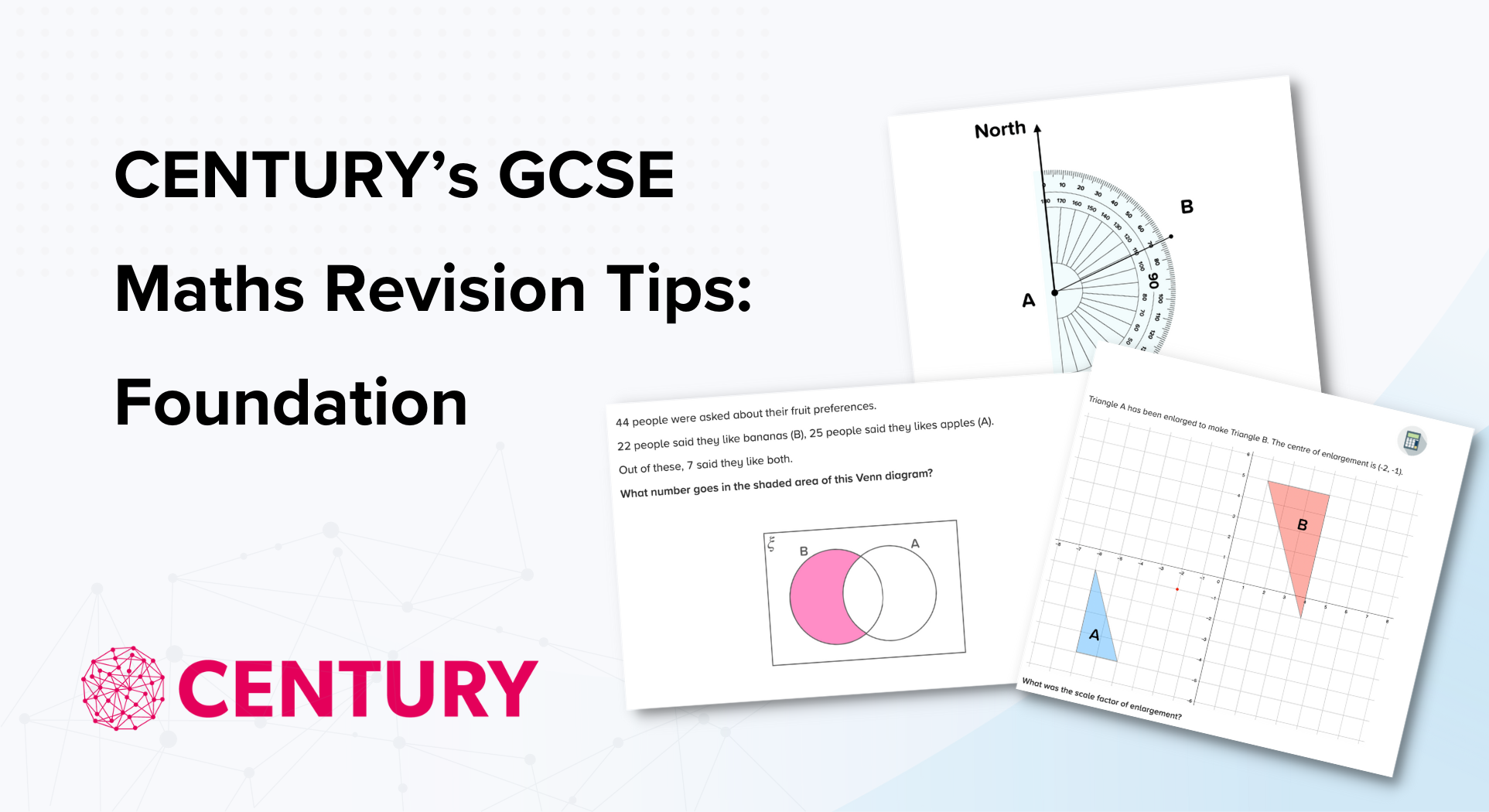



In this case most students just simplified the numbers in the ratio, giving answers such as 5 : 1, rather than taking the units into consideration. This would be a great topic to revise to cover unit conversions as well. In addition to remembering to convert to the same units before simplifying a ratio, students should be reminded that when simplifying a ratio with units, the final answer should not contain any units.
Revision nuggets:
- Simplifying Ratios (MF15.02)
- Simplifying Ratios with Units (MF15.06)
- Converting Metric Length (One Step) (MF36.04)
- Converting Metric Mass (One Step) (MF36.07)
2. Bearings
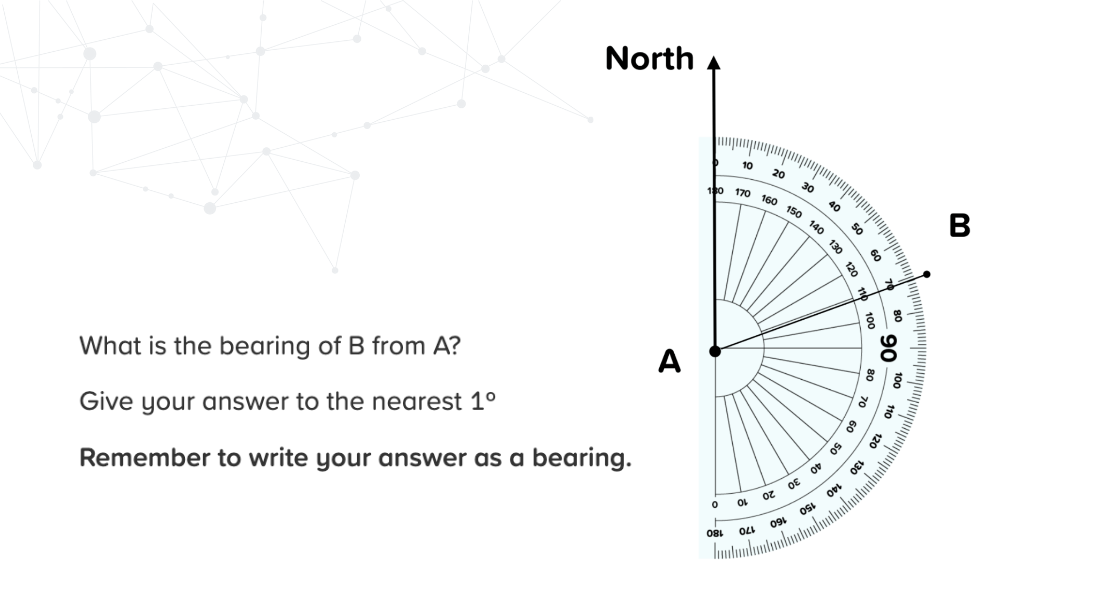

The most common error seen on the platform was not entering the bearing as a 3 digit value. This could be a quick win to ensure students are achieving full marks on a bearings question without needing to deepen understanding. There were also errors made in measuring, giving answers of 109° or 110°, so the skill of measuring angles cannot be taken for granted.
Revision nuggets:
- Introduction to Bearings (MF39.06)
- Bearings from North (MF39.07)
- Finding Bearings 1 (MF39.08)
- Finding Bearings 2: Using Co-interior Angles (MF39.09)
- Measuring Angles 2: Angles < 180° (MF26.12)
3. Calculating theoretical probability
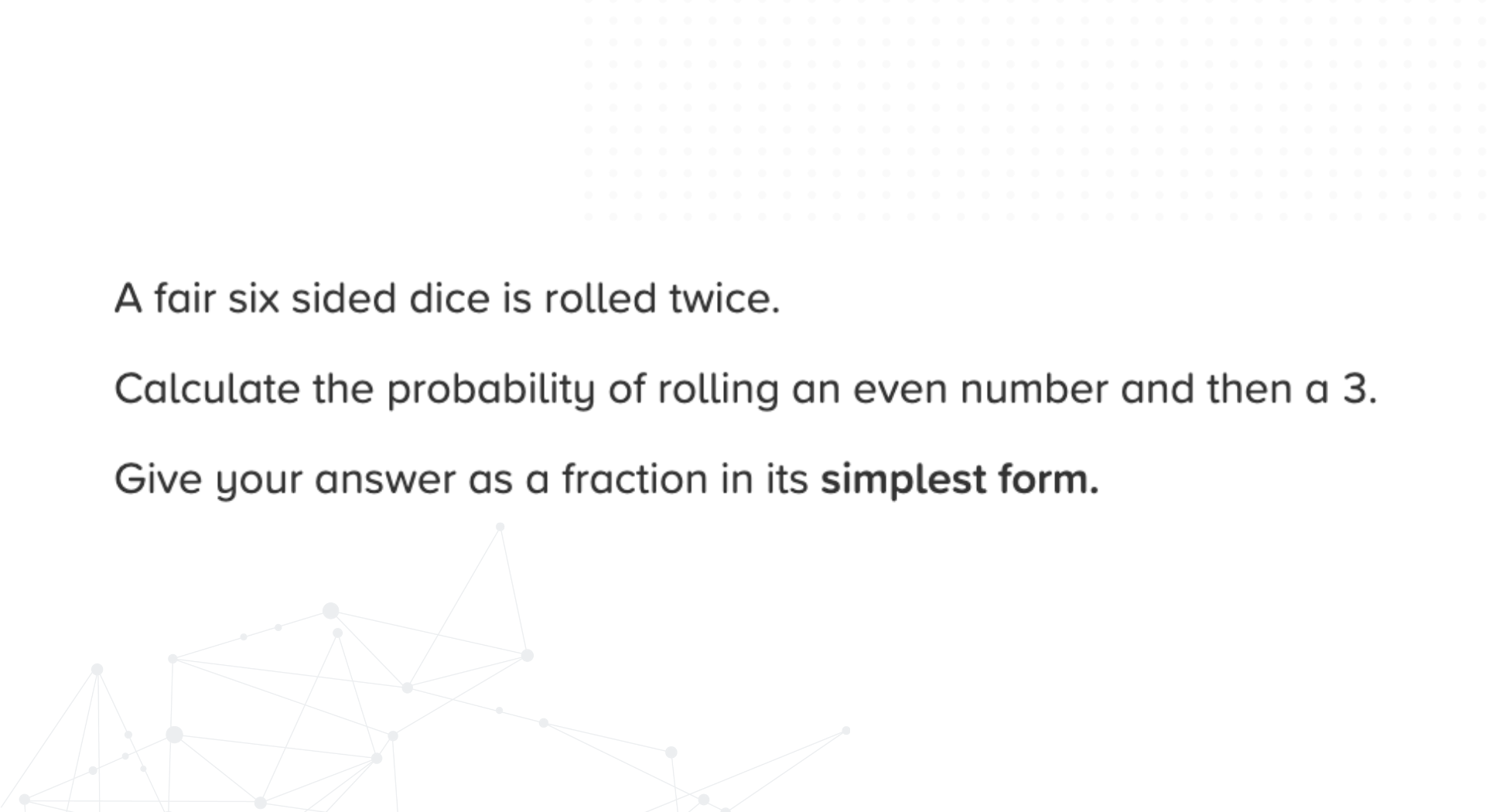

In this question students tended to be able to recognise the fractions needed, but made errors in manipulating them. For some students it can be counter intuitive that in probability ‘and’ requires a multiplication and ‘or’ requires an addition. It may be worth spending time going over this with your students to prepare them to tackle more complex probability problems.
Revision nuggets:
- Calculating Probability (MF46.03)
- Multiplication Law of Probability (AND) (MF46.12)
- Addition Law of Probability (OR) (MF46.13)
4. Map scales
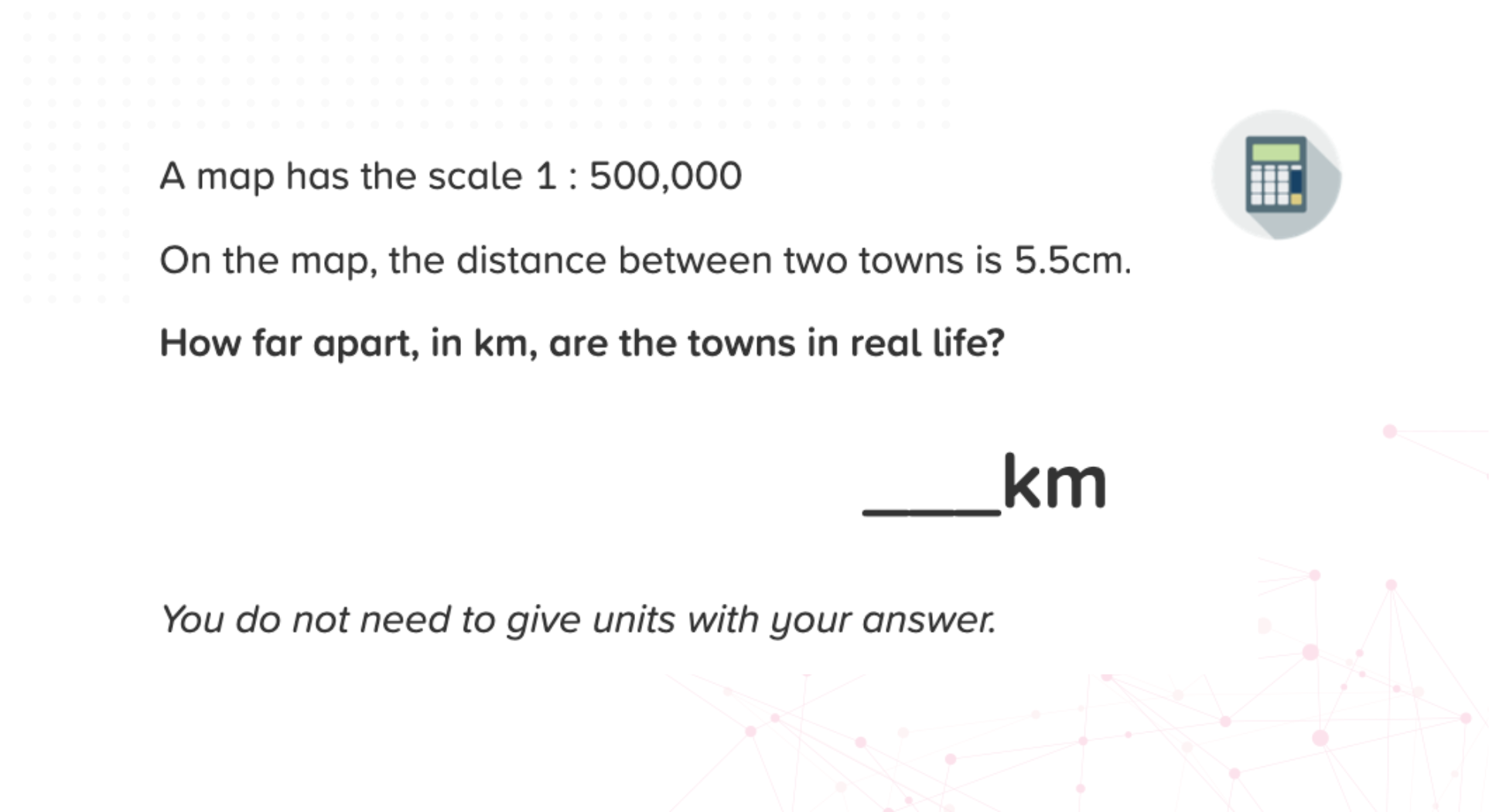

As with ratios above, the most common error here was simply scaling up to an equivalent ratio and not considering the two different units given in the question. In an exam it is important for students to bring in their own checks to questions, for example when a question has a ‘real life’ setting, encourage students to ask if their answer makes sense. In this case, does it sound plausible that two towns are 2,750,000 kilometres apart?
Revision nuggets:
- Simplifying Ratios with Units (MF15.06)
- Converting Metric Length (Multi-Step) (MF36.05)
- Using Scales without Units (MF39.03)
- Finding Scales without Units (MF39.04)
- Using Scales on a Map (MF39.05)
5. Repeated percentage decrease


When calculating repeated percentage decrease, many learners multiplied by the number of years, rather than raising to the power. It may be that some learners at foundation tier are more comfortable with repeated percentage increase (compound interest). Exam boards are providing a formulae sheet for summer 2023 exams and compound interest is included. Students should be encouraged to use the formulae sheet and shown how to apply this formula for depreciation.
Revision nuggets:
- Percentage Increase and Decrease: Modelling (MF10.06)
- Percentage Decrease (MF10.02)
- Depreciation (Calculator) (MF11.08)
- Compound Interest and Depreciation (Calculator) (MF11.09)
6. Venn diagrams
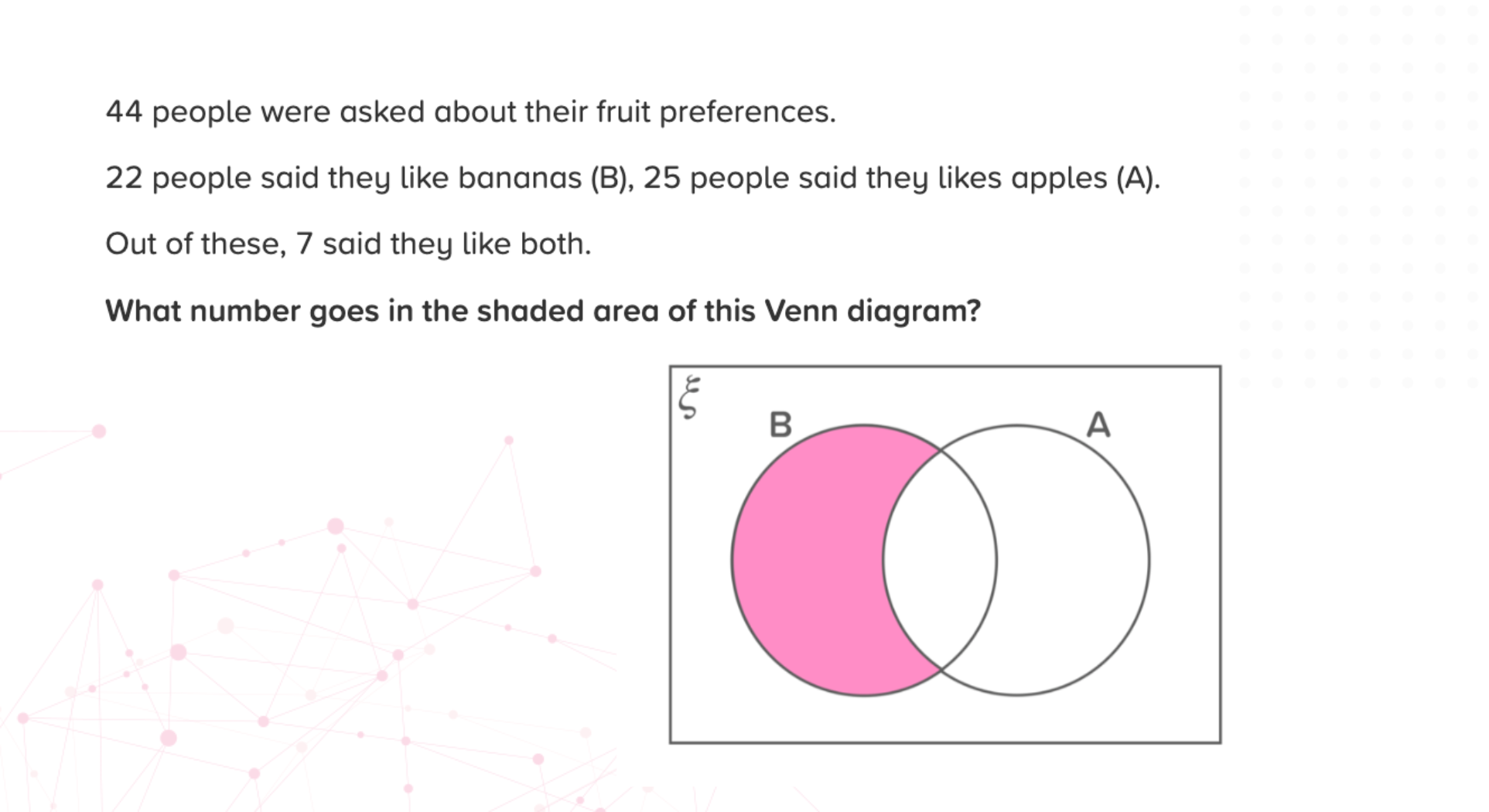

Venn diagram questions require students to understand that a category is represented by an entire circle, not just the part that doesn’t overlap. An answer of 22 was the most common here, showing this misconception. A useful strategy for students here is to complete the whole Venn diagram.
Students should also be encouraged to consider how many marks a question is worth in an exam: if there is more than one mark available, students should expect to carry out a calculation.
Revision nuggets:
- Introduction to Venn Diagrams (MF47.05)
- Constructing Venn Diagrams 1: Listing Elements (MF47.06)
- Constructing Venn Diagrams 2: Writing Values (MF47.07)
- Interpreting Venn Diagrams 1: 2-Set Diagrams (MF47.09)
- Shading Venn Diagrams 1: 2-Set Diagrams (From Words) (MF47.08)
7. Inverse proportion


In this question it is useful to ask students to estimate an answer before starting any calculations. If the number of builders working increases, would they expect building a house to take more or less time?
There are different methods that students could then use to approach this question. Some students may prefer the unitary method (working out how long it will take for one builder to build a house first before scaling up). Other students might use the fact that values in inverse proportion always multiply to the same amount, in this case 10 × 15 = 150 and so 6 × ? = 150.
Revision nuggets:
- Inverse Proportion 1: Introduction (MF16.07)
8. Converting between fractions and ratios


The common error of simply taking the values in the fraction and writing them as a ratio was evident here, with many students selecting the answer 1 : 5. You could encourage students to use a number in the question that they could find fractions of (100 for example) and write this as a ratio, before simplifying. This helps to emphasise that the denominator of the fraction represents the total, not one part of the ratio.
Revision nuggets:
- Introduction to Ratio (MF15.01)
- Converting Fractions into Ratios (MF15.12)
- Converting Ratios into Fractions (MF15.11)
- Fraction of Amounts: Modelling (MF4.39)
- Fraction of Amounts: Non-Calculator (MF4.29)
Here are our revision tips for the higher tier maths paper.
Book a demo to find out how CENTURY can help your learners prepare for this year’s exams.
CENTURY in the news
View all News
-
Case studies
3rd July 2025
Driving Progress with CENTURY at Middlesbrough College
“This is a massive improvement for an FE college in the northeast. This data is a clear indicator that if you’re using the platform, you’re making progress.” Middlesbrough College is in its third year of using the CENTURY platform. They…
Read more
-
Uncategorised
2nd July 2025
How CENTURY supports personalised learning, informs planning and reduces tutor workload…
Seymour McConnell runs McConnell's Tuition, an online tutoring company providing Maths, English and Science sessions for students from Year 1 to Year 11. Initially operating from a community centre, since the COVID-19 pandemic they have moved entirely online and now…
Read more

